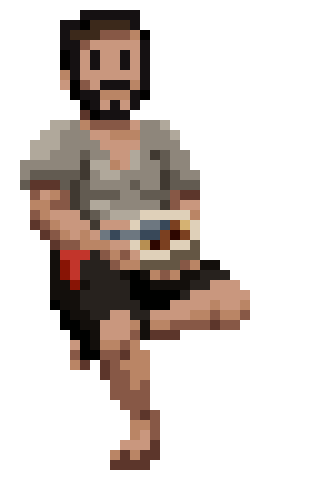top of page

Lead Level Design
I lead two other level designers to help create player spaces for both combat and narrative. I would help them with the initial flow needed for the level and then give iteration feedback. After the level was solidified, I would go through and do a narrative and combat pass through the level. Setting up level blueprints for narrative beats to fire and setting up proper combat blueprints and enemy composition throughout the levels.

One of many level blueprints
.png)
It was important with how many enemy types we had, that we introduce them slowly throughout the game rather than all at once. It was also important to keep enemy composition varied and fresh; not only to flesh out the narrative within the level but for player experience as well. I created global blueprints for enemy spawning, level transitions, and music shifts within our levels.
Combat Area in Level 3
I would meet with other leads and our producers to ensure we were on schedule and collaborating efficiently. Tried very hard to mitigate headbutting with our Systems team since they worked very close to parts of our team (Encounters). I was one of the driving forces that pushed our gameplay as a whole.
Miniboss Combat
Enemy Design
I crafted 6 core enemy types with 4 stat differentials each, a mini boss unit, and a two phase final boss with 2 boss units and 2 additional enemy units specially designed for the final encounter. I did the design, scripting, and AI.

Enemy type lineup

Enemy BP Function List
Because UE4 doesn't have a lot of built in functionality for the tactics genre, we basically built our own engine inside UE4. For enemies, we crafted a core character unit to use for both player characters and enemies. I then made a child of that core to be our base enemy, which housed all the movement logic, player finding, and ally finding. From there I made another child for each individual unit so we could do simple drag and drop within our levels. Being able to have enemies and PCs derived from the same unit was extremely helpful so we could mix and match player and enemy abilities. We ended up doing that pretty rarely but we set it up early for success in the future if we wanted.
We also created a subsystem to help us build player and enemy abilities quickly and be able to slot them in with ease. Utilizing this tool from our engineers I created all the enemy/boss abilities and helped with many of the player abilities since they worked the same way. I also worked closely with our player character team with balance and damage formulas. I spent the last 2 weeks of the project very dedicated to balancing the game with xp and damage/health numbers.

Ability subsystem
After building out all the basic functions of the enemies, I set up the AI behavior trees for all of them. For the final boss I also set up one "Hub" unit that would direct all the other units on it's action to create interplay between the units so they all didn't just act separately from each other.

Sentinel Enemy Class Behavior Tree
The goal for the final boss was to break away from previous gameplay a bit. We wanted to create more of a puzzle boss rather than a health sponge boss. With tactics games, there's usually no dodging unless it's through a stat. We wanted to blur the lines between real time combat and tactics with Sword of Atlas, so we incorporated physically dodging into this boss fight to help breath more real time combat into this final showdown.
Gameplay of multiple levels.
Final Boss timestamp 13:13
I also helped our lead producer showcase our game in the EAE Launch showcase at the University of Utah. Being able to talk about more than just my portion of the game in a public format. Our team also did dev vlogs and I was featured on one of them to talk about the Encounter team that I was leading.
Encounter Team Dev Vlog
bottom of page
